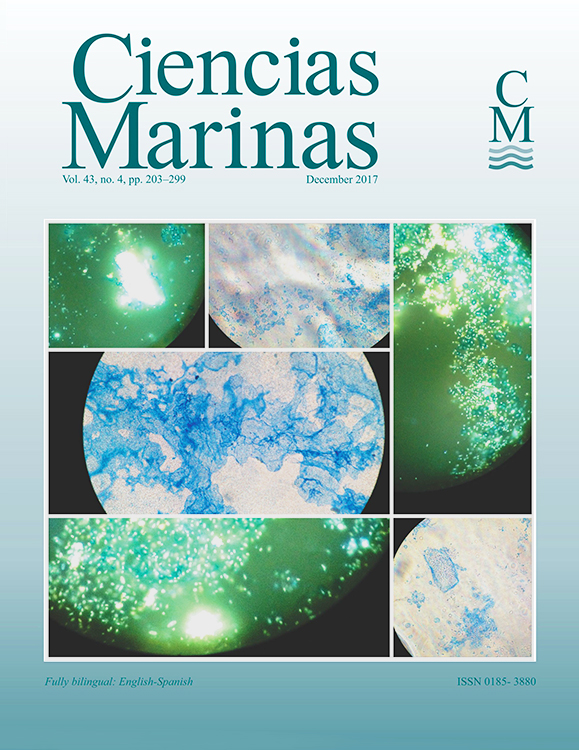Diurnal frequency internal waves in the southern part of the California Current ecosystem as a nutrient source
Main Article Content
Abstract
Although the semidiurnal internal tide dominates internal motions at all sites studied to date off Mexico, a diurnal signal was detected on the shelf of the California Current System off Baja California Sur, even though the barotropic tide is exponentially stronger in the semidiurnal frequency along this coastline. In this study, diurnal thermocline shoaling events were measured in kelp beds in late summer and fall of 2004, very near their southern limit in the Northern Hemisphere. Sub-thermocline water bathed the base of the kelp beds at a diurnal frequency. Nitrate concentrations up to 1.4 µmol·L–1 were found in this sub-thermocline water of almost 20 ºC entering the kelp beds, which is a much greater concentration of nitrate at this temperature than is typical for the California Current. Nitrate-rich pulses lasted from 35 min to 19 h and reduced bottom temperatures up to 5 ºC in 1 h. The periodicity of temperature variability at the moorings showed significant coherence with the diurnal variability in zonal winds (>95% confidence interval) and was not coherent with the semidiurnal tide. We propose that windforced, diurnal internal motions may provide an important nutrient source for primary producers during reduced upwelling periods and merit further study as a fertilization source in the southern part of the California Current System.
Downloads
Article Details

This work is licensed under a Creative Commons Attribution 4.0 International License.
This is an open access article distributed under a Creative Commons Attribution 4.0 License, which allows you to share and adapt the work, as long as you give appropriate credit to the original author(s) and the source, provide a link to the Creative Commons license, and indicate if changes were made. Figures, tables and other elements in the article are included in the article’s CC BY 4.0 license, unless otherwise indicated. The journal title is protected by copyrights and not subject to this license. Full license deed can be viewed here.

